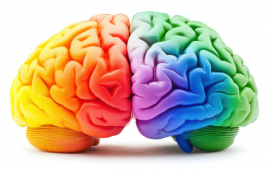

A new study led by investigators from Brigham and Women’s Hospital has identified a distinct brain network associated with patterns of brain atrophy in schizophrenia. The study, published in Nature Mental Health, combines neuroimaging data from over 8,000 participants across multiple studies, revealing a specific atrophy pattern that is unique to this condition and not seen in other psychiatric conditions.
The research team, led by Dr. Ahmed T. Makhlouf, MD, of the Center for Brain Circuit Therapeutics, found that schizophrenia-related brain atrophy is not localized to isolated brain regions but is connected through a common network. This network includes areas such as the bilateral insula, hippocampus, and fusiform cortex. These findings could guide future clinical trials that will assess brain stimulation sites linked to this schizophrenia-specific network.
The study analyzed data from 90 studies, involving 1,636 patients with newly diagnosed schizophrenia, 2,120 with chronic schizophrenia, and more than 6,000 healthy controls. It also included individuals at high genetic or clinical risk for this disease, helping researchers understand how early-stage brain atrophy may predict the development of the disorder.
By using a technique called coordinate network mapping (CNM), the researchers created a brain map that highlighted overlapping areas of atrophy in affected patients. The resulting network was distinct from those found in patients with other conditions, such as Alzheimer’s disease, major depressive disorder, or substance use disorders. This confirms that the identified network is specific to schizophrenia.
Importantly, the research revealed that this connectivity pattern was consistent across patients at different stages of the disease and those with varying symptoms. Even patients who were on antipsychotic medications showed similar atrophy patterns, indicating that the network is a core characteristic of the disorder.
The findings could inform clinical trials exploring targeted treatments, such as transcranial magnetic stimulation (TMS), aimed at modulating this schizophrenia-specific brain network. Further research into these atrophy patterns, particularly in high-risk individuals, may provide valuable insights into early diagnosis and intervention strategies for this disease.
Dr. Makhlouf concludes, “Our study suggests that schizophrenia may not be a neurodegenerative disorder, but rather a disorder with a unique brain network that could be pivotal for future treatments.” join the International Brain Health Symposium for the latest 2025 neurology updates.
More information: Heterogenous Patterns of Brain Atrophy in Schizophrenia Localize to A Common Brain Network, Nature Mental Health (2024). DOI: 10.1038/s44220-024-00348-5
more recommended stories
 Spatial Computing Explains How Brain Organizes Cognition
Spatial Computing Explains How Brain Organizes CognitionKey Takeaways (Quick Summary) MIT researchers.
 Gestational Diabetes Risk Identified by Blood Metabolites
Gestational Diabetes Risk Identified by Blood MetabolitesKey Takeaways (Quick Summary for Clinicians).
 Phage Therapy Study Reveals RNA-Based Infection Control
Phage Therapy Study Reveals RNA-Based Infection ControlKey Takeaways (Quick Summary) Researchers uncovered.
 Pelvic Floor Disorders: Treatable Yet Often Ignored
Pelvic Floor Disorders: Treatable Yet Often IgnoredKey Takeaways (Quick Summary) Pelvic floor.
 Urine-Based microRNA Aging Clock Predicts Biological Age
Urine-Based microRNA Aging Clock Predicts Biological AgeKey Takeaways (Quick Summary) Researchers developed.
 Circadian Control of Neutrophils in Myocardial Infarction
Circadian Control of Neutrophils in Myocardial InfarctionKey Takeaways for HCPs Neutrophil activity.
 E-Cigarette Use and Heart Attack Risk in Former Smokers
E-Cigarette Use and Heart Attack Risk in Former SmokersKey Takeaways for Clinicians and Nurses.
 36-Week Pre-eclampsia Screening May Reduce Term Risk
36-Week Pre-eclampsia Screening May Reduce Term RiskA New Preventive Strategy for Term.
 Cardiovascular Risk and Sudden Cardiac Death in Diabetes
Cardiovascular Risk and Sudden Cardiac Death in DiabetesRising Sudden Cardiac Death (SCD) Risk.
 Poor Kidney Function and Alzheimer’s Biomarkers Explained
Poor Kidney Function and Alzheimer’s Biomarkers ExplainedPoor kidney function may influence levels.

Leave a Comment